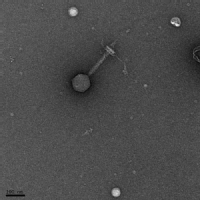Andrew Millard
Summary
My research interest focus around phage altering host metabolism but in two different systems
1. The oceans account for up to 50% of global CO2 fixation and the most abundant primary producers in the ocean are cyanobacteria of the genera Synechococcus and Prochlorococcus. These cyanobacteria are infected by cyanophages. During my Ph.D., I found that cyanophage carries photosynthetic genes in their genome. These genes psbA and psbD, encode for the core photosynthesis proteins D1 and D2, are known as auxiliary metabolic genes (AMGs). An unavoidable consequence of photosynthesis is the damage to the proteins D1 and D2, therefore they are rapidly turned over and replaced. It is thought cyanophage carry these genes to maintain the photosynthetic apparatus of their host during the infection cycle. It has been shown during infection that there is no decrease in the photosynthetic efficiency, suggesting these genes are functional. Furthermore, we have shown that during phage infection CO2 fixation is inhibited. Current research aims to further understand the role of phage AMGs in host CO2 fixation.
2. Bacteriophages infecting human pathogens can also carry AMGs, in addition they can also transfer antimicrobial resistance genes between bacteria. Preliminary research using viral metagenomics has allowed us to identify the presence of AMRs in the viral fraction of DNA extracted from agricultural slurry. This is now been further investigated as part of the NERC EVAL-FARMS project.
In addition an isolation based approach is being used to study both the diversity of coliphages in slurry and the rates at which they can transduce AMR genes. Currently ~150 coliphages have be isolated and sequenced, some of which have been found to carry resistance genes. Work to characterise these phages isolates continues
Selected publications:
Andrew Millard, Martha R. J. Clokie, David A. Shub, and Nicholas H. Mann . Genetic organization of the psbAD region in phages infecting marine Synechococcus strains (2004). PNAS 101 (30) 11007-11012
Richard J Puxty, David J Evans, Andrew D Millard, David J Scanlan*. Viruses Inhibit CO2 Fixation in the Most Abundant Phototrophs on Earth (2016).Current Biology 26, 1585–1589 * Co Senior Authors
R. Smith, M. O’Hara, J. L. Hobman,A. D. Millard. Draft Genome Sequences of 14 Escherichia coli Phages Isolated from Cattle Slurry (2015). Genome Announcements 3, 6 e01364-15
Rihtman B, Meaden S, Clokie MRJ, Koskella B, Millard AD. (2016) Assessing Illumina technology for the high-throughput sequencing of bacteriophage genomes. PeerJ 4:e2055 https://doi.org/10.7717/peerj.2055


